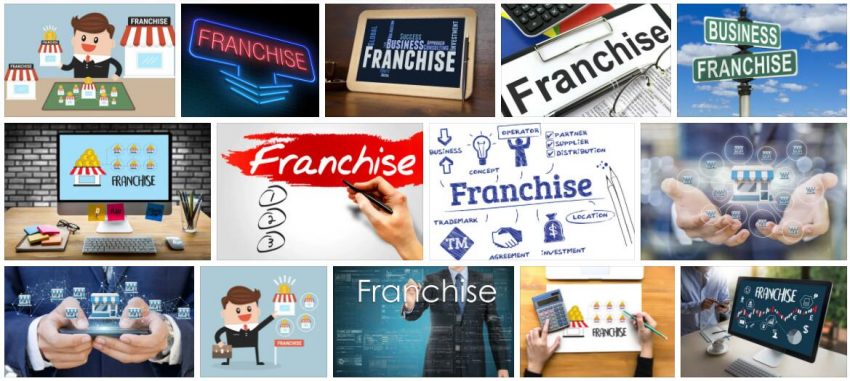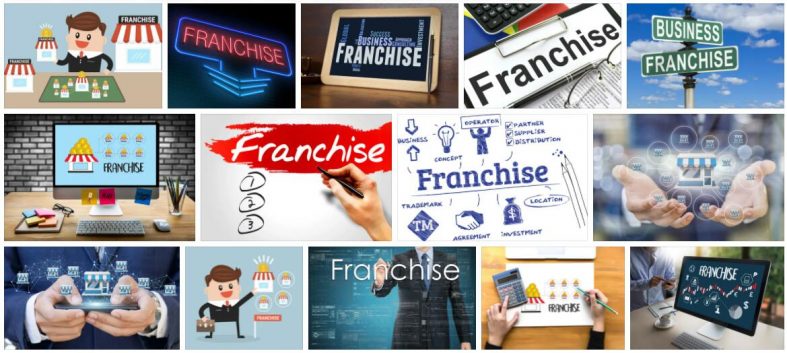The franchise, also known as franchising, is a proven business model that has been operated successfully for more than 150 years. While this system first found its way into Germany in the 1980s, the USA are considered to be the pioneers in this area. Put simply, the franchise describes a cooperation between independent companies that is concluded with the aim of economic expansion – but both parties benefit equally from the partnership. In the following, we would like to explain the topic in more detail and go into the development history of the franchise and the future prospects.
What does franchise mean?
Franchise describes a sales system based on business cooperation. A company that has already established itself on the market with its concept offers its business idea to other company founders. The company that provides the concept is known as the franchisor. The founder, who founds his company on the basis of the existing business model, is the franchisee.
To ensure that everything runs smoothly, guidelines and provisions relating to the granting of licenses are set out in the so-called franchise agreement. Despite this basis, the franchisee is legally an independent company. In return for a one-time entry fee and regular license fees, the franchise partner has the right to use the franchisor’s business model to sell products or offer services in accordance with the contractually agreed standards.
How does the franchise system work?
In practice, franchise means that an identical company is built up with the help of a tried and tested business concept as part of the operational partnership. In addition to marketing the products or services, the purpose of the cooperation is to expand the franchise company. The franchise system is based on permanent and close cooperation between the franchise partners, who are, however, financially and legally independent companies. The entrepreneurial partnership is concluded between the franchisor and the franchisee and regulated via the franchise contract.
The franchisee not only receives the right to market the goods or services on the basis of the existing business model of the franchisor, but with franchising also undertakes the obligation to operate the company according to the guidelines of the concept. At the same time, however, the franchisor also provides its partner with a tailor-made service package, whereby the company founder is comprehensively supported. In some cases, the franchisors also offer training courses in which the business concept is explained and assistance is provided to make it easier for the franchisee to meet the contractually regulated requirements.
The division of labor between the franchise partners creates a synergy that enables greater coverage of the market, intensifies customer loyalty to the franchise company and increases competitiveness against competitors. Due to the constant further development of the business model, the franchisees benefit from standardized processes that enable a uniform implementation of the concept. In this way, the franchise system has both the power of an influential parent company and the proximity of the business partner to the customer on site. Because of this interaction, the franchise company is often able to successfully assert itself even against large competitors.
Benefits of the franchise
- With the help of the franchise system, it is easier for the franchisee to set up a business. The franchisee benefits from a concept that has already established itself on the market, which in turn enables faster market entry.
- The franchisee receives support from the franchisor in setting up and opening the company. This includes, among other things, the selection of the company location , financing, marketing and training. But the franchisee can also take advantage of assistance in day-to-day business, for example with the implementation of advertising concepts, through centrally regulated purchases or further training.
- By acquiring the franchise license, the franchisee can build on an existing customer base, which makes it easier to enter the market.
- The franchise offers advantages not only for the company founder, customers also benefit from it. With the franchise system, customers can be sure that the services will be provided in the usual quality.
Disadvantages of the franchise
- The restricted entrepreneurial freedom is often perceived as negative in the franchise system. Due to the guidelines set by the franchisor, the franchisees have only limited scope for design. However, this restriction also makes sense. Because the specifications ensure that the image of the franchise company is protected.
- Since license fees are incurred for the entire duration of the cooperation, the profit generated by the franchising cannot be withheld in full.
- If the image of the franchise company is damaged by a scandal or other incident, then the franchisees are automatically affected as well.
- If the franchisee decides the task of the company, he cannot regulate the takeover by a successor alone. In this case, the franchisor retains a say and can decide on the successor.
Creation of the first franchise systems
According to dictionaryforall, the franchise in its early form dates back to the 19th century. As a result of industrialization, companies first used the concept to expand. In 1860, for example, the US-based Singer Sewing Machine Company offered traveling dealers the opportunity to sell their sewing machines for their own account. The company did not succeed in building a cost-covering sales network. However, the franchise was able to establish itself as a distribution system in the following years.
The American fast food chain McDonald’s laid the foundation for the Business Format franchise as it is practiced to this day. The chain was originally founded by the brothers Richard and Maurice McDonald. The restaurant gained fame in 1948 when they first used a new way of preparing hamburgers and switched the restaurant to self-service. Five years later, the brothers made their concept available to their first franchisee.
In 1954, Ray Kroc proposed to the McDonalds brothers for the first time to expand the company with additional franchisees. In the years that followed, Kroc managed to create a global network of McDonald’s restaurants. The McDonald’s franchise system now includes more than 30,000 partners. For the first time, the franchising business format comprised the rights of use of a business concept with the associated know-how.
The international breakthrough of the business format franchise, as coined by the Americans, came years later. The franchise did not gain a foothold in Europe until the 1970s. Due to the further spread of franchising systems, even traditional companies succeeded in establishing new sales opportunities in the early days. While franchising was initially limited to retail and catering, it has now also encompassed many other sectors. It can now be said that the franchise system is one of the most successful marketing concepts of all time. In Europe alone, around 10,000 companies now use the option of franchise sales.

